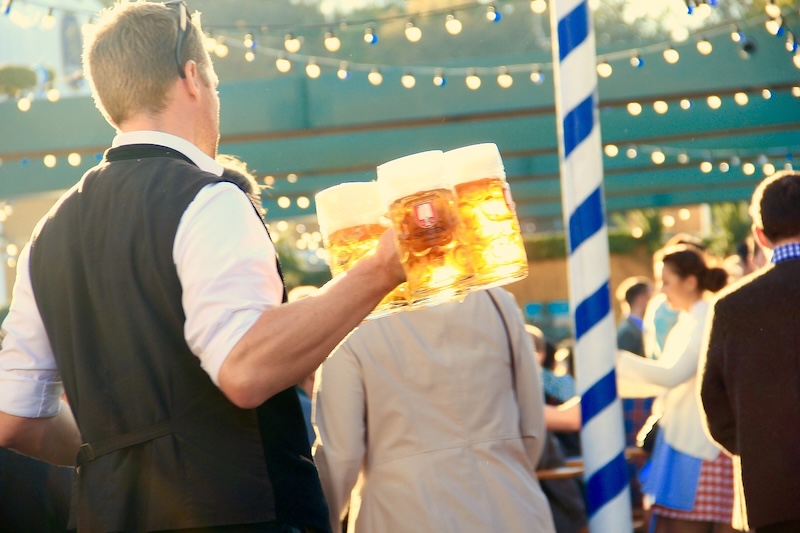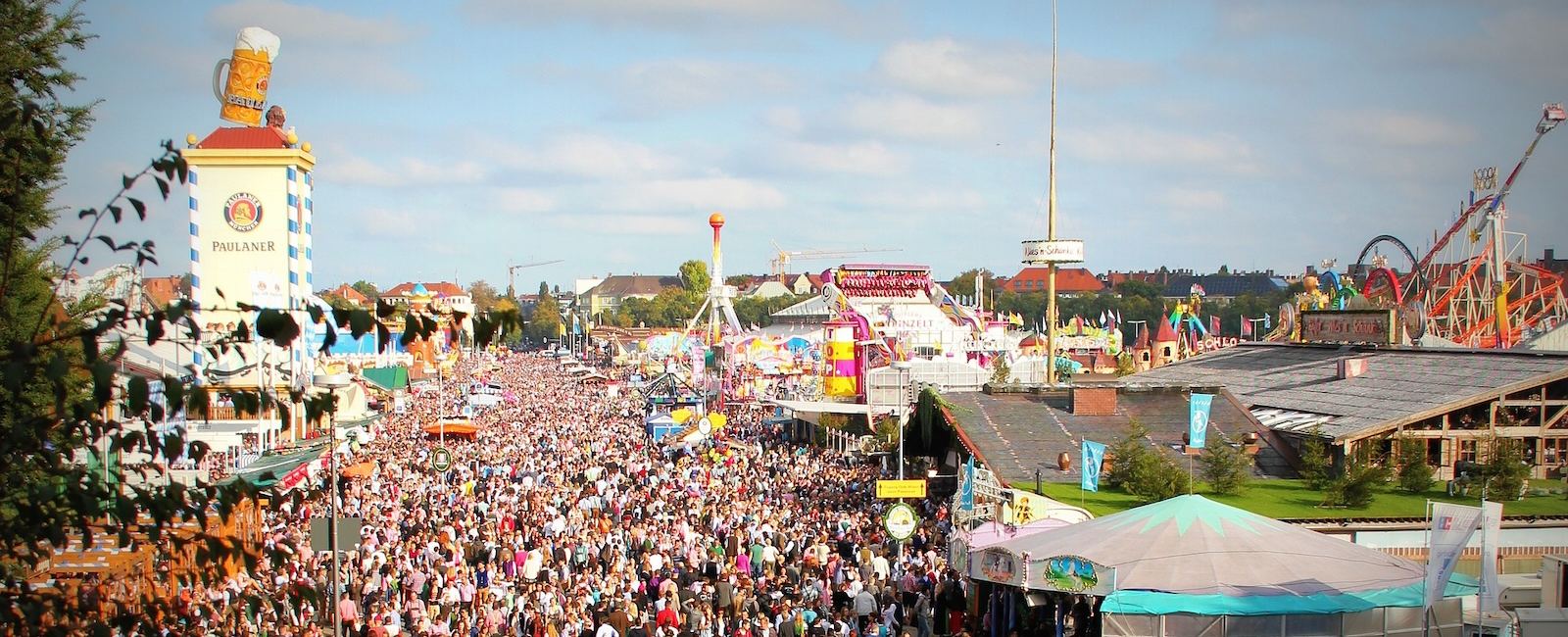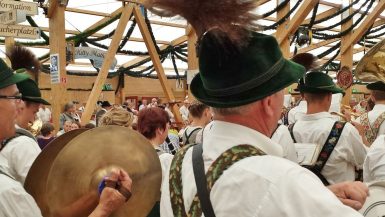Introduction
Bavaria, the southeastern state of Germany, is a region that is rich in history, culture, and tradition. Among its most famous cultural exports is the Oktoberfest, the world’s largest Volksfest (beer festival and traveling funfair). Held annually in Munich, Bavaria’s capital, this 16- to 18-day festival attracts millions of visitors from all over the globe. It’s a celebration that goes beyond mere beer consumption, encompassing traditional Bavarian music, attire, cuisine, and communal camaraderie. This article delves into the origins, traditions, activities, and modern-day significance of Oktoberfest, offering a comprehensive guide for anyone looking to experience this iconic festival.
Historical Origins of Oktoberfest
The Royal Wedding
The origins of Oktoberfest date back to October 12, 1810, when Crown Prince Ludwig (later King Ludwig I) married Princess Therese of Saxe-Hildburghausen. The citizens of Munich were invited to join in the festivities, which were held over five days on the fields in front of the city gates. This area was later named Theresienwiese (“Theresa’s Meadow”) in honor of the princess. The celebration ended with a horse race, which became a crucial part of the event in the following years.
Evolution Over Time
In the early years, Oktoberfest was primarily a horse racing event. However, as it grew in popularity, it expanded to include agricultural shows, which showcased Bavarian agriculture and livestock. By the late 19th century, beer tents began to emerge, offering a place for visitors to enjoy the local brew. Over time, these beer tents became the central attraction of the festival, accompanied by a fairground with carousels, swings, and other amusements.
Interrupted but Unbroken Tradition
Oktoberfest has not been held every year since its inception. Wars, economic crises, and epidemics have occasionally interrupted the festival. Most notably, Oktoberfest was canceled during the Napoleonic Wars, World War I, and World War II. Despite these interruptions, the festival has always returned, growing larger and more vibrant with each passing year.
The Beer Tents
The Heart of the Festival
At the heart of Oktoberfest are its beer tents, which are actually vast, elaborately decorated halls capable of seating thousands of people. There are currently 14 large tents and 20 smaller ones, each offering a unique atmosphere and selection of beer and food. These tents are run by some of Munich’s most famous breweries, including Augustiner, Paulaner, Hacker-Pschorr, Hofbräu, and Löwenbräu.
The Opening Ceremony
The festival officially begins with the ceremonial tapping of the first keg by the Mayor of Munich, who declares “O’zapft is!” (“It is tapped!”). This takes place in the Schottenhamel tent, one of the oldest and most traditional tents. This ceremony marks the start of beer service, and the first mug is handed to the Minister-President of Bavaria.
Music and Entertainment
Each tent features live music, typically traditional Bavarian folk music during the day and more contemporary tunes in the evening. Bands play a mix of oompah music, Schlager (a genre of European popular music), and party anthems. Singing along and dancing on the benches is not just encouraged; it’s a fundamental part of the experience.
Traditional Attire
Dirndls and Lederhosen
Visitors to Oktoberfest often don traditional Bavarian attire: dirndls for women and lederhosen for men. Dirndls are colorful dresses with a bodice, blouse, full skirt, and apron. The style and length of the dirndl can vary, but they are typically adorned with lace, embroidery, and ribbons. Lederhosen are leather shorts or knee-length breeches, often worn with suspenders and a checkered or white shirt. Both costumes are accessorized with items like alpine hats, wool socks, and sturdy shoes.
Cultural Significance
Wearing traditional attire is more than just a nod to Bavarian culture; it’s a way for locals and visitors alike to feel a sense of unity and tradition. Many Bavarians own multiple sets of traditional clothing and wear them with pride, not just at Oktoberfest, but at various cultural events throughout the year.
Culinary Delights of Oktoberfest
Bavarian Cuisine
Oktoberfest is as much a culinary experience as it is a celebration of beer. Traditional Bavarian dishes are served in abundance, both in the beer tents and at various food stalls throughout the festival grounds. Some of the must-try dishes include:
- Weißwurst: A white sausage made from veal and pork, typically served with sweet mustard and pretzels.
- Hendl: Roasted chicken, usually seasoned with a blend of spices that give it a crispy, flavorful skin.
- Schweinshaxe: Roasted pork knuckle, often served with potato dumplings and sauerkraut.
- Brezn: Bavarian pretzels, large and soft with a crispy crust, often enjoyed with Obatzda, a cheese spread made from camembert, butter, and spices.
- Käsespätzle: Bavarian cheese noodles, similar to macaroni and cheese but made with soft egg noodles and topped with crispy onions.
Sweet Treats
No festival is complete without its share of sweet treats, and Oktoberfest is no exception. Visitors can indulge in a variety of desserts, such as:
- Lebkuchenherzen: Heart-shaped gingerbread cookies decorated with icing and often inscribed with messages of love or friendship.
- Apfelstrudel: A traditional apple strudel, filled with spiced apples and raisins, often served with vanilla sauce or whipped cream.
- Kaiserschmarrn: A fluffy, shredded pancake dusted with powdered sugar and served with fruit compote or apple sauce.
The Beer
Brewing Tradition
The beer served at Oktoberfest is a special type of Märzen lager, brewed in March and allowed to ferment slowly over the summer. This results in a beer that is slightly stronger and darker than a typical lager, with a rich, malty flavor. Only beer from Munich’s six major breweries, known as the “Big Six,” is allowed to be served at the festival. These breweries are Augustiner, Hacker-Pschorr, Hofbräu, Löwenbräu, Paulaner, and Spaten.
Beer Culture
Beer is served in one-liter mugs called Maßkrüge, and the act of toasting, or “Prost!,” is a central part of the experience. It’s common to see groups of friends and strangers alike raising their mugs in unison, celebrating the shared joy of the festival. Waitresses, known as “Kellnerinnen,” carry multiple mugs at once, often managing up to 12 full Maßkrüge, showcasing impressive strength and balance.

The Funfair
Rides and Attractions
Oktoberfest is also home to a large funfair, with rides and attractions for all ages. Traditional rides like the Ferris wheel, roller coasters, and carousels are perennial favorites. In addition, modern thrill rides offer more adventurous options, such as high-speed roller coasters and drop towers.
Family-Friendly Activities
While beer tents are the main attraction for many, Oktoberfest also offers plenty of family-friendly activities. Tuesdays are designated as Family Day, with reduced prices on rides and attractions. Children can enjoy pony rides, puppet shows, and various games, while parents can take in the festive atmosphere without the heavy crowds and louder music found later in the evening.
Parades and Events
The Costume and Riflemen’s Parade
One of the highlights of Oktoberfest is the Costume and Riflemen’s Parade, held on the first Sunday of the festival. This grand procession features around 9,000 participants, including traditional costume groups, marching bands, riflemen, and decorated horse-drawn carriages. The parade travels through the streets of Munich, showcasing the rich cultural heritage of Bavaria.
Traditional Bavarian Music and Dancing
Throughout the festival, various events highlight traditional Bavarian music and dancing. Folk music performances, Schuhplattler (a traditional Bavarian dance), and yodeling contests are just a few examples of the cultural activities visitors can enjoy. These events provide a deeper understanding of Bavarian traditions and the significance of Oktoberfest in preserving them.
Sustainability and Modern Challenges
Environmental Initiatives
In recent years, Oktoberfest has made significant strides toward sustainability. Initiatives such as reducing waste, promoting recycling, and using green energy have been implemented to minimize the environmental impact of the festival. Many tents now use reusable mugs and cutlery, and food vendors are encouraged to use locally sourced ingredients.
Balancing Tradition and Modernity
One of the challenges facing Oktoberfest is balancing tradition with modernity. As the festival continues to grow in popularity, it must adapt to accommodate the increasing number of visitors while maintaining its traditional roots. This includes addressing issues such as crowd control, safety, and the commercialization of the event. Despite these challenges, Oktoberfest remains a celebration deeply rooted in Bavarian culture, offering an authentic experience for all who attend.
Tips for Visitors of Oktoberfest
Planning Your Visit
For those planning to attend Oktoberfest, it’s essential to plan ahead. Accommodation in Munich can fill up quickly, so booking well in advance is recommended. Additionally, understanding the layout of the festival grounds and the various beer tents can help visitors make the most of their experience.
Best Times to Visit
Weekdays and early mornings are generally less crowded, making it easier to find a seat in the beer tents and enjoy the rides without long lines. Visiting during the first week of the festival can also be less hectic compared to the final weekend, which often sees a surge in attendance.
Etiquette and Customs
Understanding local customs and etiquette can enhance the Oktoberfest experience. For example, it’s customary to tip waitstaff generously, as they work long hours and rely heavily on tips. Additionally, visitors should be respectful of the traditional attire and cultural practices of the festival.
Conclusion
Oktoberfest is more than just a beer festival; it’s a celebration of Bavarian culture and tradition that brings people together from all corners of the world. With its rich history, vibrant atmosphere, and array of activities, it offers something for everyone. Whether you’re a beer enthusiast, a food lover, or simply looking to immerse yourself in Bavarian culture, Oktoberfest promises an unforgettable experience. By understanding its origins, traditions, and modern significance, visitors can fully appreciate the magic of this iconic festival. So, don your dirndl or lederhosen, raise your Maßkrug, and join the millions who gather each year to celebrate Oktoberfest—Prost!

